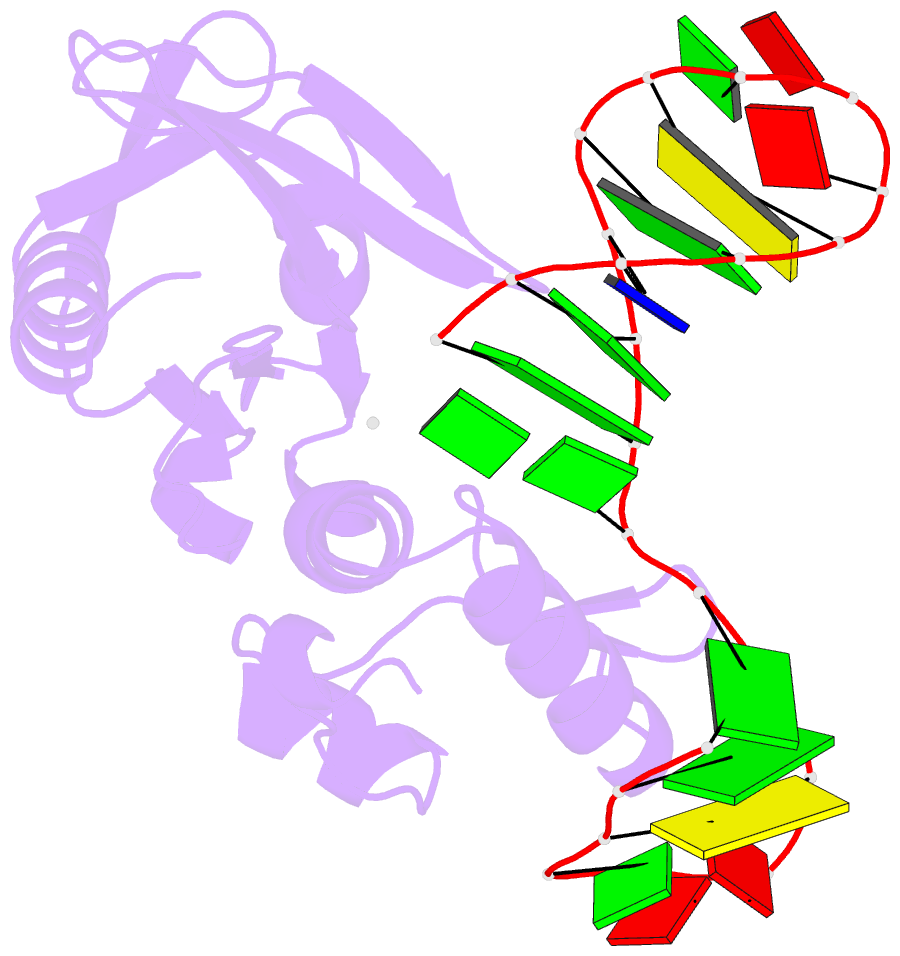Summary information and primary citation
- PDB-id
- 2m2w; SNAP-derived features in text and JSON formats;
DNAproDB
- Class
- transferase-DNA
- Method
- NMR
- Summary
- Ternary complex of asfv pol x with DNA and mgdgtp
- Reference
- Wu WJ, Su MI, Wu JL, Kumar S, Lim LH, Wang CW, Nelissen FH, Chen MC, Doreleijers JF, Wijmenga SS, Tsai MD (2014): "How a low-fidelity DNA polymerase chooses non-Watson-Crick from Watson-Crick incorporation." J.Am.Chem.Soc., 136, 4927-4937. doi: 10.1021/ja4102375.
- Abstract
- A dogma for DNA polymerase catalysis is that the enzyme binds DNA first, followed by MgdNTP. This mechanism contributes to the selection of correct dNTP by Watson-Crick base pairing, but it cannot explain how low-fidelity DNA polymerases overcome Watson-Crick base pairing to catalyze non-Watson-Crick dNTP incorporation. DNA polymerase X from the deadly African swine fever virus (Pol X) is a half-sized repair polymerase that catalyzes efficient dG:dGTP incorporation in addition to correct repair. Here we report the use of solution structures of Pol X in the free, binary (Pol X:MgdGTP), and ternary (Pol X:DNA:MgdGTP with dG:dGTP non-Watson-Crick pairing) forms, along with functional analyses, to show that Pol X uses multiple unprecedented strategies to achieve the mutagenic dG:dGTP incorporation. Unlike high fidelity polymerases, Pol X can prebind purine MgdNTP tightly and undergo a specific conformational change in the absence of DNA. The prebound MgdGTP assumes an unusual syn conformation stabilized by partial ring stacking with His115. Upon binding of a gapped DNA, also with a unique mechanism involving primarily helix αE, the prebound syn-dGTP forms a Hoogsteen base pair with the template anti-dG. Interestingly, while Pol X prebinds MgdCTP weakly, the correct dG:dCTP ternary complex is readily formed in the presence of DNA. H115A mutation disrupted MgdGTP binding and dG:dGTP ternary complex formation but not dG:dCTP ternary complex formation. The results demonstrate the first solution structural view of DNA polymerase catalysis, a unique DNA binding mode, and a novel mechanism for non-Watson-Crick incorporation by a low-fidelity DNA polymerase.





